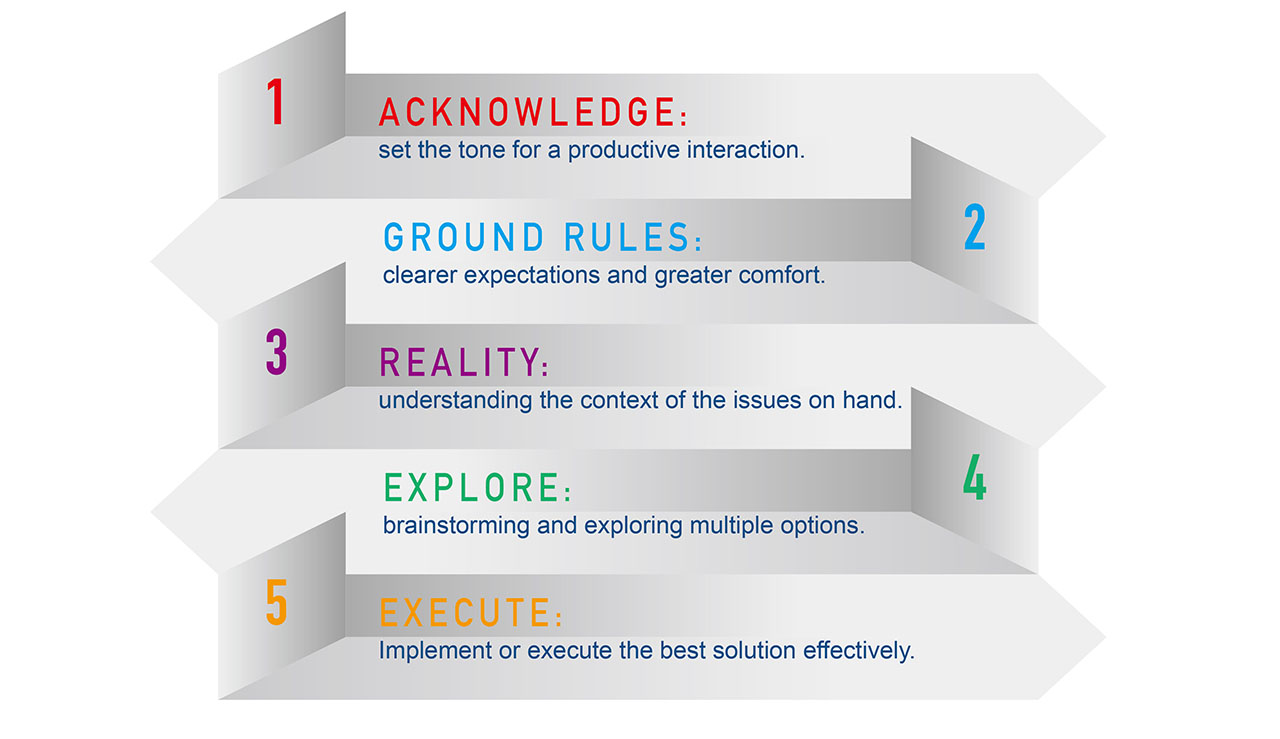Best-Practice Toolkit: The Five-Step “AGREE” Framework to Achieve Collaboration
The Centre for Executive Education (CEE) has developed the five-step “AGREE” process (see Figure 1) for achieving commitment to team collaboration at the workplace as well as resolving conflict and negotiation situations as driven using communication skills.

Figure 1: The “A.G.R.E.E.” Framework for Achieving Team Collaboration
A: Acknowledge
Example: “I sense that we see this issue very differently, and I believe it is an important matter. Would it be helpful, from your perspective, to spend some time focusing on this? Who else should we involve to help us find a workable solution or work toward resolving this?”
G: Ground Rules
Examples: Listen to understand; question to clarify; maximize participation; silence means assent; speak for yourself; be respectful.
R: Reality
Example: “If I am understanding you correctly, you are saying . . .”
E: Explore
Example: “What do you think are the possible alternatives to resolve this challenge or issue?”
E: Execute
Example: Possible objective criteria include cost, timeline, and customer demand.
Conclusion
Collaboration in a workplace involves a group of people sharing their ideas and skills to achieve a common goal. Working collaboratively, instead of individually, helps improve productivity and gives employees a sense of purpose in the organization. It also becomes easier to brainstorm ideas to solve an existing problem or deliver the required work on time.
Employees with different ideas, perspectives, and expertise can result in conflicts however they must work together to find innovative solutions, which in turn allows organizations to solve problems in a faster and more efficient manner.

